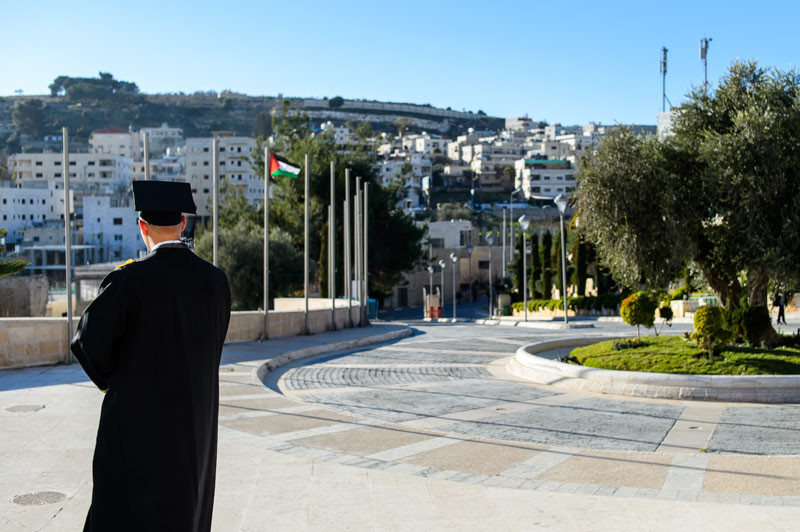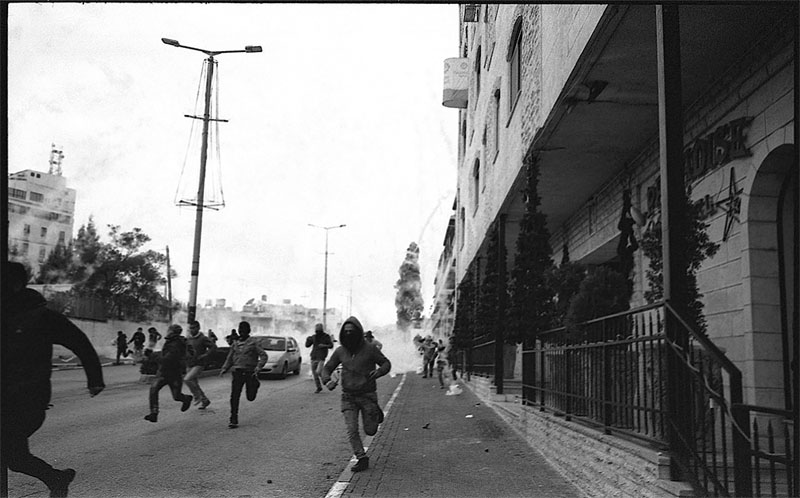PetaPixel is a popular Website for photographers.
The Dallas Morning News has referred to PetaPixel as “a great resource for photography enthusiasts (June 29, 2012; ‘Staying-In-Briefing’ column).” Unfortunately, the Website also
has provided a propaganda showcase
for
“the Palestinian narrative
” – the “Photo Essay: The Other Side of Palestine”
page (dated March 24, 2016) created by Brian Megens (a photographer based in Maastricht, Netherlands) falsely portrays a helpless people victimized by colonial oppressors. “The Other Side of Palestine” provides a wide range of scenes from placid to problematic often accompanied by incomplete, one-sided and misleading text with featured links to two related likewise anti-Israel Web pages. Megens asserts “I will not turn this article into a political essay,” but in fact does just that. PetaPixel presumably approves.
False name, false narrative
About “The Other Side of Palestine” – what Palestine? What “other side” of Megens’ essay? Repeated use of the term “Palestine” in the essay – starting with the title – and in the two linked Web pages – uncritically parrots the Palestinian Arab implication that a “Palestine” apart from the League of Nations and United Nations British Mandate for Palestine existed or exists and is illegally occupied by Israel. A new Arab state called “Palestine” might result from Arab-Israeli negotiations pursuant to U.N. Security Council Resolutions 242 and 338, the 1995 Israeli-Palestinian Interim Accords and 2003 U.S., Russian, U.N. and European Union “roadmap,” but such an outcome awaits a future compromise. Premature invocations of “Palestine,” among other things, consciously or inadvertently foreclose such an outcome. Meanwhile, Israel (17 percent of the original Palestine Mandate land today) and Jordan (78 percent of the land today) are successor states to the original mandate land. The Gaza Strip and West Bank are the unallocated remaining five percent, with the Strip currently controlled by Hamas, separate from the Palestinian Authority administering the West Bank.
Megens begins his essay extolling Canadian photographer Chris Hughes (and the essay links to Hughes’ PetaPixel Web page “10 Minutes in the West Bank with a Film Camera”): “Dear Chris Hughes, thanks for sharing your beautiful photos and your experiences during a clash in the West Bank. The Israel-Palestine conflict is very controversial and often ends in simplified debates wherein the actions of the Palestinians are condemned and the Israelis defended, or vice versa. Your article was no exception, as debates among various readers in the comment section took an expected course with one side defending the Palestinians and the other defending the actions of the Israelis. As PetaPixel is a photography platform, I will not turn this article into a political essay. However, for everyone that is interested in the conflict, I recommend reading human right reports, international court verdicts, and UN statements…”
But these sources are not necessarily informative except as tutorials in anti-Israel bias. Skewing the outcomes are the still considerable influence of Arab petro-dollars, the 22 member states of the Arab League and the 57 member countries of the Organization of Islamic Conference (OIC). U.N. investigations are notorious (one example is the Goldstone Report) for lack of lack of objectivity, duplicitous methodology and biased mandates predetermining their conclusions – when it comes to Israel. Human Rights Watch is the most conspicuous of the human rights groups. HRW’s anti-Israel activities have been exposed by CAMERA. HRW’s extreme bias against Israel compelled its founder, Robert Bernstein, to break with it and found a new group, Advancing Human Rights. Bernstein wrote several commentaries admonishing Human Rights Watch for its unfair treatment of Israel. In an article published in The New York Times on Oct. 19, 2009, Bernstein wrote, “Leaders of Human Rights Watch know that Hamas and Hezbollah chose to wage war from densely populated areas, deliberately transforming neighborhoods into battlefields. They know that more and better arms are flowing into both Gaza and Lebanon and are poised to strike again. And they know that this militancy continues to deprive Palestinians of any chance for the peaceful and productive life they deserve. Yet Israel, the repeated victim of aggression, faces the brunt of Human Rights Watch’s criticism.”
Lack of context
 |
 |
Compelling photos and text convey a one-sided picture related to Hebron which has been partitioned by Israel between Jews and Palestinian Arabs. Text and captions include: "Former city centre of Hebron now a no-man's-land in between the settlement and the reallocated old city centre of Hebron." "In the settlement [in Hebron], a Jewish settler with an M-16 assault rifle." "Girl from the Palestinian family looking outside through the barb wire window [in Hebron] where the Jewish kids play (photo above left)." "Kids from settlement play in their playground separated by fences from the Palestinian side (photo above right)." But no context is provided. First, Hebron, like all of the West Bank (Judea and Samaria) was part of ancient Israel and of Mandatory Palestine, created by the League of Nations and continued by the United Nations to enable the reestablishment of a Jewish national home. The Cave of Machpelah in Hebron is one of the holiest places in Judaism (considered by many as second only to Jerusalem's Temple Mount) as it is the final resting place for all the patriarchs and matriarchs (except for Rachel wife of Jacob). It is the burial place that Abraham purchased for his family af
ter Sarah died (Genesis 23:8-17). Later Abraham was buried there (Gen. 25:9) as was Isaac and Rebekah and Jacob and Leah. The Jewish community was reestablished in Hebron following the 1967 Six Day War. Eighty percent of Hebron is ruled by the Palestinian Authority (P.A.) and has been since 1997 according to an agreement between the P.A. and Israel.
Megens links to his Petapixel project Web
page on which
he says, “The old city centre of Hebron is occupied by settlers who claim the land on religious grounds. Besides carrying M-16 weapons themselves, they are also protected by heavily armed soldiers." Why this security? Not a word from Megens. Erased is the 1929 Hebron massacre
in which an Arab mob slaughtered 67 Jews,
some of whom were tortured and mutilated before being murdered. The “ethnic cleansing” of the entire Jewish community followed. Today's
Israeli security measures exist to protect Jews from Palestinian Arab attacks such as the 2001 murder of Shalhevet Pass, a 10-month-old shot in her stroller by a Palestinian sniper. A legacy of the Arab incitement to hatred and violence against Jews in Hebron was the 1994 murder by Israeli Baruch Goldstein of 29 Arabs in prayer at the mosque in Hebron built around the Cave of Machpelah. The act was widely condemned by Israeli officials and society. Palestinian Arab officials and society fail to condemn murders committed by Arabs against Israelis. In fact the perpetrators are often treated as heroes including financial rewards to their families and streets and town squares named after them. Without the protection of several hundred Israeli soldiers, several hundred Jews could not live in part of an historically Jewish neighborhood in Hebron among its 200,000 Arabs – although tens of thousands of Arabs live in Israeli cities, among large Jewish majorities – with no need of any such security.
 |
 |
“The Other Side of Palestine" photos include placid scenes such as the one above at left which is also unintentionally (presumably) humorous. Its caption is “University graduation ceremony near Bethlehem” but an apt caption would be: “Where is everybody? Am I the only graduate today?” Photo at right is typical of the contents of the Hughes Web page, "10 Minutes in the West Bank with a Film Camera," which contains purely inflammatory material: a 10 minute video clip, eight photos and accompanying text.
Photo propaganda not photo journalism
Megens empathizing with the Palestinians, never with the Israelis, states, “I started reading reports and papers on the country and the conflict, I talked to people who are from Palestine, and my impression was that although the Palestinians are being suppressed, discriminated and left in the cold by Israel and a majority of the international community, they are trying hard to build up a life. To test my impression, I wanted to go there myself, live with locals, experience and capture life in the West Bank. That is what I did. For three weeks I travelled the country, met the people and lived with them, capturing unique images and stories… I went to the West Bank last January [2016] and stayed there for three weeks for my project ‘The Other Side of Palestine'...” Megens' faith in his auto-didactic path to Arab-Israeli knowledge – "I started reading reports and papers ... and talked to people from Palestine" plus "three weeks there [the West Bank] for my project" is revealing. A one-sided, self-administered introductory cram course and three weeks of photo-tourism on a subject that's deeply engaged and often bedeviled scholars, diplomats and world-leaders for several generations – Megens "tested" (and confirmed) his uninformed impressions by "capturing life in the West Bank. That is what I did." As his photo-essay confirms, this sort of superficial, "parachute" journalism may be less informative than no journalism at all.
An online search fails to find a Megens essay about the Israelis. Whatever kind of journalism we have here, it certainly seems to be agenda-driven and polemical. PetaPixel has provided a total of four Web pages related to the Arab-Israeli conflict – the three one-sided items mentioned here – "The Other Side of Palestine," Project page for "The Other Side of Palestine," and "10 Minutes in the West Bank with a Film Camera," – plus one other
page, the basically irrelevant "Arab-American Journalist's Kiss Photo with Israeli Boyfriend Becomes Viral Symbol of Peace" certainly not balancing the bias of the other three. PetaPixel's founder and chief editor, Michael Zhang, should be informed that his pro-Palestinian photo propaganda is at best inappropriate. Journalism, to be worthwhile, rests on Kipling's "six honest serving men"; who, what, when, where, why and how. Megens' "project" falls woefully short. Zhang can be reached at
[email protected].



